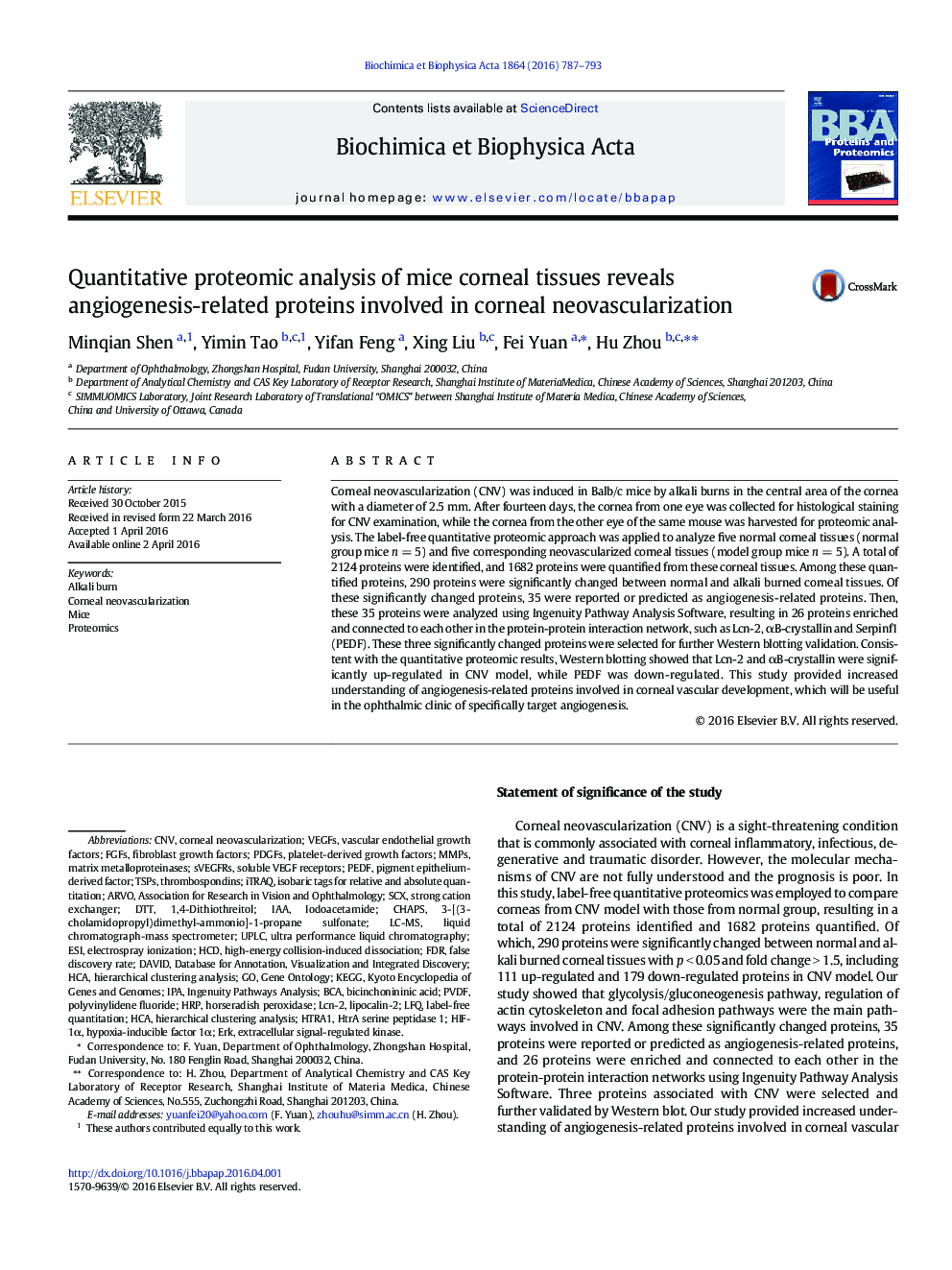| Article ID | Journal | Published Year | Pages | File Type |
|---|---|---|---|---|
| 1177690 | Biochimica et Biophysica Acta (BBA) - Proteins and Proteomics | 2016 | 7 Pages |
•Label-free quantitative proteomic approach was applied to analyze corneal tissues under alkali injury.•2124 proteins were identified, with 290 proteins significantly changed between normal and alkali burned corneal tissues.•Angiogenesis-related protein-protein interaction network was significantly changed during corneal neovascularization.
Corneal neovascularization (CNV) was induced in Balb/c mice by alkali burns in the central area of the cornea with a diameter of 2.5 mm. After fourteen days, the cornea from one eye was collected for histological staining for CNV examination, while the cornea from the other eye of the same mouse was harvested for proteomic analysis. The label-free quantitative proteomic approach was applied to analyze five normal corneal tissues (normal group mice n = 5) and five corresponding neovascularized corneal tissues (model group mice n = 5). A total of 2124 proteins were identified, and 1682 proteins were quantified from these corneal tissues. Among these quantified proteins, 290 proteins were significantly changed between normal and alkali burned corneal tissues. Of these significantly changed proteins, 35 were reported or predicted as angiogenesis-related proteins. Then, these 35 proteins were analyzed using Ingenuity Pathway Analysis Software, resulting in 26 proteins enriched and connected to each other in the protein-protein interaction network, such as Lcn-2, αB-crystallin and Serpinf1 (PEDF). These three significantly changed proteins were selected for further Western blotting validation. Consistent with the quantitative proteomic results, Western blotting showed that Lcn-2 and αB-crystallin were significantly up-regulated in CNV model, while PEDF was down-regulated. This study provided increased understanding of angiogenesis-related proteins involved in corneal vascular development, which will be useful in the ophthalmic clinic of specifically target angiogenesis.
